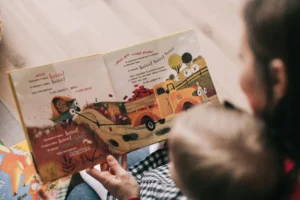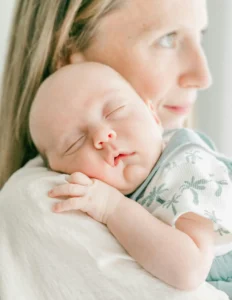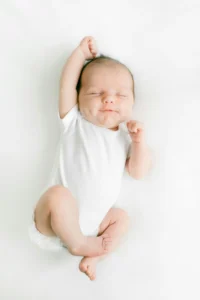Let’s talk about the history of the crib for a moment. “High-sided” or “Infant-beds” were first invented in 1620 to keep a baby contained in a small space. The crib, as it became known, was first made from a hollowed-out tree trunk or log.
Through the years, improvements were made such as adding a sidewall to the base of the crib. Beginning with a flat panel all the way around, that design turned into what we are more familiar with now; posts or rails that encircle the base with the ability to move up and down.
As the years passed, so did the materials that were used to build cribs. Many manufacturers jumped on board, each creating their version adding upgrades to entice the consumer. In 1973 the Food and Safety Administration (FSA) created a set of rules all manufacturers must abide by to ensure the safety of their crib was met.
In the ‘80s the Consumer Product Safety Commission got involved and added its own set of rules that must also be met by crib manufacturers. By 2008, the laws which had not changed in 30 years, were redesigned to include even more safety measures to be put into place, which brings us to today, where we can feel very confident that we are keeping our babies safe when making a crib purchase.
Our sleep experts at Rocky Mountain Sleeping Baby have extensive research into putting together a comprehensive list of pros and cons for a variety of cribs.
Crib longevity
Babies may start out in a bassinet or pack n play. As a newborn, some may eliminate that step and begin directly with sleeping in a crib. When coaching our newborn clients we advise using a pack n play over a bassinet. We have found many babies don’t like sleeping in a bassinet. And, even if they do like sleeping in the basinet it is used for only the first few months of life for a baby. This can be a large expense to only use for 3-4 months. Regardless, we sure have come a long way from a hollowed-out tree trunk!
Our sleep consultants have a standard timeframe for how long we recommend a toddler should utilize the crib set up, and typically we aim for 3 years old. Based on sleep studies, sleep training, and readiness, three was determined to be the age to begin the transition to a toddler bed. There may be occasions when a toddler is younger and may switch sooner, however, we approach an earlier switch on a case-by-case basis.
Cribs are also great at keeping your little ones safe unless they are getting an early start on their rock climbing or parkour career and are scaling the sides and escaping. If this is happening, it’s probably a sign you need to adjust the sides of the crib or explore the option of a toddler bed. If in doubt, give one of our sleep experts a call and we can discuss suggestions to keep your little one in a crib, or if you prefer, discuss a toddler-bed transition. We also have previous blogs that discuss the topic of the crib to bed transition.
How low can you go?
Most cribs now have a variety of mechanisms and capabilities to help and protect the little one inside of them. Cribs have also transitioned to a much more sleek and modern look. While these are beautiful in the new nursery – they can be quite easy to climb out of when a toddler gets older. We prefer a crib that has a higher side or two to help prevent crawling out.
When your baby is first starting in their crib, they typically are not able to crawl, stand up for long periods, or scoot close enough to roll over the crib walls. As your baby grows, you can move the mattress down to help keep them safe. Some clues to look for when determining when to lower the mattress are:
- Baby is standing up on their own, or they can stand for longer periods of time holding on to the edge of something sturdy.
- Baby has started to scooch, or crawl.
- Baby is trying to grab the edge of the crib.
- Baby had a growth spurt.
Creating a safe space
A crib is designed to create a safe space for sleeping. It is important to keep it free from clutter, or items that could cause harm to your baby. The soft blanket or plush toy may feel nice or look cute, however, they can also cause serious harm to your baby. Babies do not have the strength to push away something that may be covering their mouth or nose, or there might be a tag, button, stitch or something you may not have noticed on an item that could pose a choking hazard. It is best to wait until 12 months to introduce a small blanket or lovey.
In our sleep training program, our certified sleep experts discuss how a clean, clutter-free sleeping space is ideal for optimal sleep health. Anything inside a crib is a hazard, and as your baby grows, items like a blanket, stuffed animal, etc. become what we call a “sleep-prop.” This is an item your toddler can attach to that may affect how they sleep. Learn more about sleep props here.
If you are concerned about not having a blanket for your baby or think they may be too cold, a sleep sack may be beneficial to your baby. We have an entire blog dedicated to sleep sacks if you would like to learn more about them.
Discover distractions
In addition to inside the crib, it is important to keep the area within 3 feet of the crib clutter-free. This means eliminating items like mobiles, netting, drapes, and lights that may be attached to, or above the crib. If there is a monitor or camera near the crib, make sure that these devices are baby-proof or far enough away from them. If any devices have a cord, ensure it is secured and baby cannot reach it or the socket it is plugged in to, or pull the cord to them.
If there is a picture or decorative piece on the wall, make sure they are high enough and secured so that baby cannot reach or remove the photo or nail/attachment holding it in place. Dressers, chairs, or changing tables should also be 3 feet apart. Our mischievous little munchkins can reach far and as we know, anything they grab can potentially become a safety risk.
There are items that are designed to attach to cribs, such as a SlumberPod home base system which can easily provide a black-out space.
Crib safety summary
There are a lot of options out there, and we hope that we have provided information that will assist you when choosing a crib for your baby. To summarize what we went over today, we created a list below:
- Cribs made after June 2011 are all required to follow the FDA and CSPS rules and regulations for safety standards.
- Hardware or attachment components must not be loose or removed.
- Mattresses inside a crib should be tight. If you can fit 2 fingers between the crib and the mattress, you need a tighter mattress.
- There is no cracked or peeling paint. All wood must be smooth and sanded, and no raw or exposed splintering wood.
- Crib sides have the capability to be lowered at least 9” above the mattress support.
- Raised crib sides are at least 26” above the mattress support in the lowest position.
- Drop-side cribs do NOT meet mandatory standards set forth by the FDA or CSPS.
At Rocky Mountain Sleeping Baby, it is our mission to provide information to others to encompass what we do and share with you. There is so much to learn about being a parent, and there is so much more to learn as your baby grows. Our certified sleep experts are here to help. We invite you to reach out to us via phone, email, or through our website contact form, as we would love to share our services, and how they may benefit you. Whether you are just getting started, or your routines need tweaks, we have a variety of strategies and solutions to offer you!
Our sleep consultants are located in Colorado, Kansas City, and Fort Worth, TX. However, everything we do is virtual. We help families all over the world and would love to help yours!





